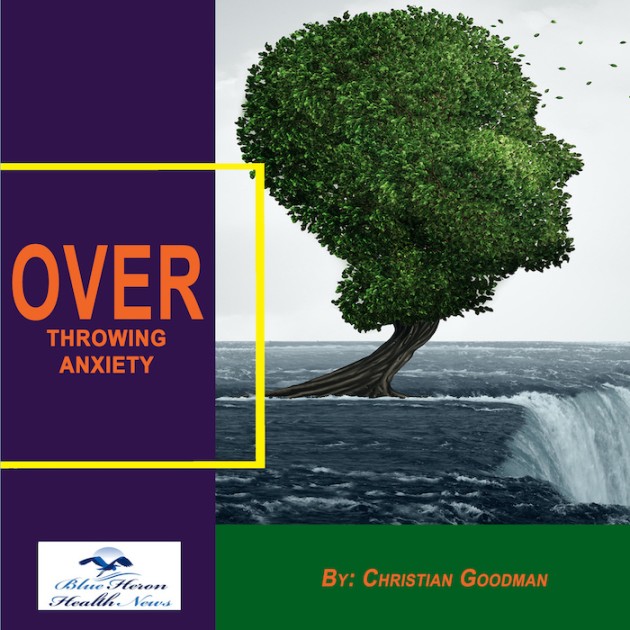
Overthrowing Anxiety™ This eBook includes a complete program to treat anxiety effectively. It guides you to learn the ways to find, understand, and accept the main cause of your anxiety and start using the techniques provided in it to treat the problem.
How can low blood pressure be managed during menopause?
Managing low blood pressure (hypotension) during menopause can be a challenge due to the hormonal fluctuations that occur during this phase of life. These changes can affect blood pressure regulation, leading to symptoms like dizziness, fainting, and fatigue. However, with proper care and lifestyle adjustments, low blood pressure during menopause can be managed effectively. Here are some strategies:
1. Stay Hydrated:
- Increased Fluid Intake: Dehydration is a common cause of low blood pressure, and menopausal women may experience dehydration more easily due to hormonal changes affecting fluid balance. Drinking plenty of water throughout the day can help maintain blood volume and prevent blood pressure from dropping too low.
- Electrolyte-Rich Drinks: In addition to water, drinks that contain electrolytes (like coconut water or sports drinks) can help balance sodium and potassium levels, which are important for maintaining healthy blood pressure.
2. Eat Small, Frequent Meals:
- Avoid Large Meals: Large meals can cause a sudden drop in blood pressure, especially in menopausal women. Eating smaller, more frequent meals can help maintain a more stable blood pressure throughout the day.
- Balanced Diet: Focus on meals that include lean protein, whole grains, healthy fats, and plenty of fruits and vegetables. Foods high in sodium (within healthy limits) can help raise blood pressure, but be cautious not to overdo it. The goal is to balance nutrition with blood pressure management.
3. Increase Salt Intake (with Caution):
- Moderate Salt Consumption: While too much salt can be harmful, slightly increasing salt intake may help raise blood pressure for some individuals. Menopausal women experiencing low blood pressure can consider adding a little extra salt to their meals or choosing foods with higher sodium content. However, it’s important to consult with a healthcare provider before making any significant changes to salt intake, especially if you have other health conditions (like kidney disease or cardiovascular disease).
4. Monitor Hormonal Changes:
- Hormone Replacement Therapy (HRT): For some women, hormone replacement therapy (HRT) can help stabilize blood pressure by addressing the hormonal imbalances caused by menopause. Estrogen and progesterone levels decline during menopause, and this may contribute to fluctuations in blood pressure. HRT can help alleviate some of the symptoms of low blood pressure, but it’s important to discuss this option with a doctor, as it may not be appropriate for all women.
- Herbal Supplements: Some women explore herbal remedies like black cohosh, red clover, or evening primrose oil to alleviate menopause symptoms. These herbs may help balance hormones and improve overall well-being. However, it’s important to consult a healthcare provider before using herbal supplements, as they can interact with other medications and affect blood pressure.
5. Exercise Regularly:
- Increase Circulation: Regular physical activity can improve blood circulation, enhance cardiovascular health, and help stabilize blood pressure. Activities like walking, swimming, or yoga can be especially beneficial for menopausal women.
- Avoid Sudden Movements: Low blood pressure is often triggered by sudden changes in position (like standing up quickly). Practicing mindful movement and standing up slowly can help reduce dizziness and prevent falls. Exercise routines that focus on balance and core strength (such as tai chi or Pilates) can improve overall stability.
6. Wear Compression Stockings:
- Improve Circulation: Compression stockings or socks can help improve blood flow from the legs back to the heart. This can prevent blood from pooling in the lower extremities, a common issue for those with low blood pressure, especially during menopause.
- Reduce Swelling: They can also help reduce swelling in the legs, which may be exacerbated by fluid retention or changes in circulation during menopause.
7. Avoid Prolonged Standing or Sitting:
- Move Regularly: Standing or sitting for long periods can contribute to low blood pressure, particularly when transitioning from a sitting to a standing position. It’s helpful to move around frequently, stretch, or shift your position regularly to improve circulation and reduce the risk of dizziness or fainting.
8. Manage Stress:
- Mindfulness and Relaxation: Menopause can be a stressful time due to physical and emotional changes. High stress can exacerbate low blood pressure symptoms. Practicing mindfulness techniques, such as meditation, deep breathing exercises, or yoga, can help manage stress and improve overall well-being.
- Stress Management: Cognitive-behavioral therapy (CBT) or other therapeutic methods can also be beneficial for managing anxiety and stress that may contribute to fluctuating blood pressure.
9. Get Enough Sleep:
- Restorative Sleep: Poor sleep quality or insufficient sleep can exacerbate the symptoms of low blood pressure. Ensuring a regular sleep schedule and practicing good sleep hygiene (such as limiting caffeine and electronics before bedtime) can help maintain optimal blood pressure.
- Restorative Naps: Short naps during the day, when needed, can provide relief from fatigue associated with low blood pressure, helping to stabilize overall energy levels.
10. Monitor Blood Pressure Regularly:
- Track Changes: Regularly monitoring blood pressure can help identify any significant drops or patterns that may require intervention. Keeping track of blood pressure at home and sharing the information with a healthcare provider can ensure that appropriate steps are taken to manage low blood pressure during menopause.
- Stay in Touch with Healthcare Providers: Regular check-ups with a healthcare provider are important for managing both menopausal symptoms and low blood pressure. Your doctor can adjust medications, recommend lifestyle changes, or explore treatments such as HRT, depending on your specific needs.
11. Consider Medications (If Necessary):
- Medications to Raise Blood Pressure: In some cases, medications such as fludrocortisone or midodrine may be prescribed to help raise blood pressure. These medications work by increasing blood volume or constricting blood vessels to elevate blood pressure. However, they should only be used under the supervision of a healthcare provider, as they may not be appropriate for everyone.
Conclusion:
Managing low blood pressure during menopause involves a combination of lifestyle changes, diet, exercise, and monitoring of both blood pressure and symptoms. Staying hydrated, eating balanced meals, managing stress, and incorporating gentle exercise are all effective strategies for supporting blood pressure regulation. For some women, hormone replacement therapy or other medications may be necessary to address hormonal imbalances. Regular communication with a healthcare provider is key to developing a comprehensive plan for managing low blood pressure during menopause.
Overthrowing Anxiety™ This eBook includes a complete program to treat anxiety effectively. It guides you to learn the ways to find, understand, and accept the main cause of your anxiety and start using the techniques provided in it to treat the problem.
